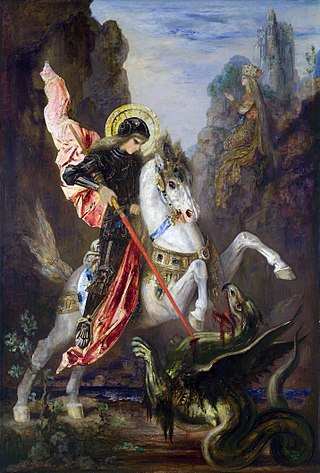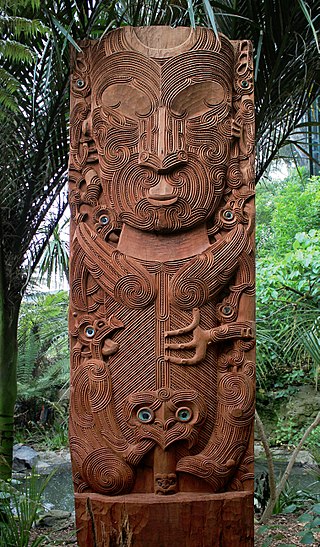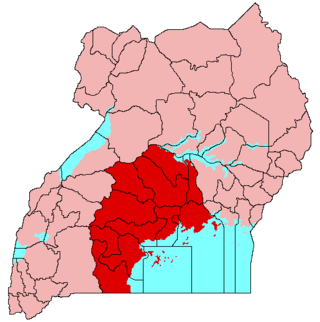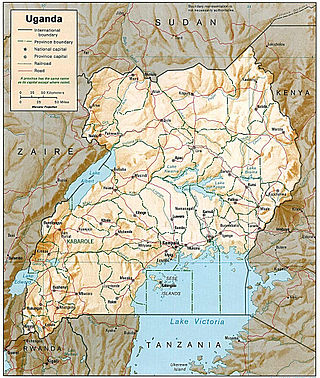
Christian mythology is the body of myths associated with Christianity. The term encompasses a broad variety of legends and narratives, especially those considered sacred narratives. Mythological themes and elements occur throughout Christian literature, including recurring myths such as ascending a mountain, the axis mundi, myths of combat, descent into the Underworld, accounts of a dying-and-rising god, a flood myth, stories about the founding of a tribe or city, and myths about great heroes of the past, paradises, and self-sacrifice.

In Māori mythology, Tāne is the god of forests and of birds, and the son of Ranginui and Papatūānuku, the sky father and the earth mother, who used to lie in a tight embrace where their many children lived in the darkness between them.
Kaha'i is a handsome Polynesian demigod whose exploits were popular in many Polynesian mythologies.

Chinese mythology is mythology that has been passed down in oral form or recorded in literature throughout the area now known as Greater China. Chinese mythology includes many varied myths from regional and cultural traditions. Much of the mythology involves exciting stories full of fantastic people and beings, the use of magical powers, often taking place in an exotic mythological place or time. Like many mythologies, Chinese mythology has in the past been believed to be, at least in part, a factual recording of history. Along with Chinese folklore, Chinese mythology forms an important part of Chinese folk religion and Taoism, especially older popular forms of it. Many stories regarding characters and events of the distant past have a double tradition: ones which present a more historicized or euhemerized version and ones which present a more mythological version.

Buganda is a Bantu kingdom within Uganda. The kingdom of the Baganda people, Buganda is the largest of the traditional kingdoms in present-day East Africa, consisting of Buganda's Central Region, including the Ugandan capital Kampala. The 14 million Baganda make up the largest Ugandan region, representing approximately 16% of Uganda's population.

Bunyoro, also called Bunyoro-Kitara, is a Bantu kingdom in Western Uganda. It was one of the most powerful kingdoms in Central and East Africa from the 13th century to the 19th century. It is ruled by the King (Omukama) of Bunyoro-Kitara. The current ruler is Solomon Iguru I, the 27th Omukama.

Erlik, Erlig, Erlik Khan, Erleg or Yerleg is the god of death and the underworld, sometimes referred to as Tamag (hell) in Turkic mythology. Er means Earth, in the depths of which Erlik lives in. From the underworld, Erlik brings forth death, plague and evil spirits to torment humans and take their souls into his realm. Since Tengrism is not based on a written corpus but encompasses the experienced spiritual life of Turkic people, there are no unanimous beliefs among all Turkic people. Erlik has already been mentioned in the Orkhon writings and shows a consistent pattern as the lord of the underworld among Turkic belief systems.
Kato Kintu Kakulukuku known in Bunyoro as Kato Kimera was the first kabaka (king) of the Kingdom of Buganda. "Kintu" is an adopted by-name, chosen for Kintu, the name of the first person on earth in Buganda mythology. Kato Kintu gave himself the name "Kintu" to associate himself with the "father of all people", and he may have renamed his wife, from Nantuttululu to Nambi, because that was Kintu's wife's name.

Bees have been featured in myth and folklore around the world. Honey and beeswax have been important resources for humans since at least the Mesolithic period, and as a result humans' relationship with bees—particularly honey bees—has ranged from encounters with wild bees to keeping them agriculturally. Bees themselves are often characterized as magically-imbued creatures, and their honey as a divine gift.

Coyote is a mythological character common to many cultures of the Indigenous peoples of North America, based on the coyote animal. This character is usually male and is generally anthropomorphic, although he may have some coyote-like physical features such as fur, pointed ears, yellow eyes, a tail and blunt claws. The myths and legends which include Coyote vary widely from culture to culture.

Māori mythology and Māori traditions are two major categories into which the remote oral history of New Zealand's Māori may be divided. Māori myths concern fantastic tales relating to the origins of what was the observable world for the pre-European Māori, often involving gods and demigods. Māori tradition concerns more folkloric legends often involving historical or semi-historical forebears. Both categories merge in whakapapa to explain the overall origin of the Māori and their connections to the world which they lived in.
In Māori mythology, as in other Polynesian traditions, Māui is a culture hero and a trickster, famous for his exploits and cleverness. He possessed superhuman strength, and was capable of shapeshifting into animals such as birds and worms.
Kintu is a mythological figure who appears in a creation myth of the people of Buganda, Uganda. According to this legend, Kintu was the first person on earth.
Ggulu is a character in the Gandan creation myth. He is the creator of all things in heaven.
Kaikuzi or Kayikuuzi is a character in the Gandan creation myth, The Legend of Kintu. He is the son of Ggulu. His name is translated as "the digger." He is responsible for attempting to rid the Earth of Walumbe, meaning "death" or "disease."

Inca mythology is the universe of legends and collective memory of the Inca civilization, which took place in the current territories of Colombia, Ecuador, Peru, Bolivia, Chile and Argentina, incorporating in the first instance, systematically, the territories of the central highlands of Peru to the north.

The mythology of Indonesia is very diverse, the Indonesian people consisting of hundreds of ethnic groups, each with their own myths and legends that explain the origin of their people, the tales of their ancestors and the demons or deities in their belief systems. The tendency to syncretize by overlying older traditions with newer foreign ideas has occurred. For example, the older ancestral mythology might be merged with foreign mythology, such as Hindu, Islam, or Christian biblical mythology.

Insects have appeared in mythology around the world from ancient times. Among the insect groups featuring in myths are the bee, fly, butterfly, cicada, dragonfly, praying mantis and scarab beetle.

Nambi is the daughter of Mugulu, also known as Ggulu in some versions of Baganda mythology. In the Ugandan creation myth, it is Nambi and her younger sister who discover Kintu, the first man. Nambi helps Kintu throughout his journey and trials, and eventually becomes his wife and mother of his children.
The Tanda pits near the town of Mityana, Uganda, are a group of over 240 circular pits in the forest. They are said to be caused by Walumbe, a central character in the creation myth of Kintu. Walumbe is a personification of death, and when he is being forced to return to heaven, he stomps on the ground, opening up pits to hide in.












